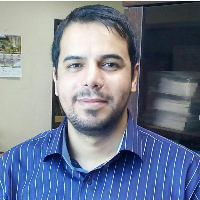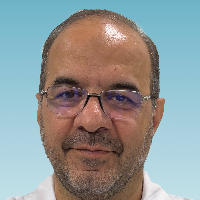دکتر سید رضا حسینی ذیجود
-
The integrity of scientific research is crucial for advancing knowledge, and the retraction of articles has emerged as a vital mechanism for upholding this integrity. However, the implications of retracted articles on researcher evaluationsparticularly concerning academic scores, H-index calculations, and journal impact factors-remain contentious. This commentary offers a comprehensive overview of how article retractions should be assessed concerning researcher and journal metrics. By synthesizing existing literature, the researcher highlighted the need for improved research evaluation practices and proposed recommendations to mitigate the adverse effects of retractions on these metrics. In addition, the researcher emphasizes the importance of transparency, contextual evaluation, and institutional policies to ensure fair academic assessments. Additionally, the present commentary discusses the underlying causes of retractions, their frequency, and the potential consequences for researchers whose work has been retracted. Finally, the researcher invited mathematicians, statisticians, ethicists, and researchers from various disciplines to develop new formulas and metrics considering retractions' consequences.
Keywords: Retracted Publication, Bibliometric, Impact Factor, H-Index -
BackgroundTrauma is a leading cause of morbidity and mortality worldwide. The frequency of trauma-related deaths depends on various factors such as the severity and mechanism of the trauma.ObjectivesThis study aimed to determine the frequency, causes, and outcomes of trauma in patients referred to the emergency department of Ali Ibn Abitaleb Hospital, Rafsanjan, Iran, in 2021.MethodsA case-series study was conducted, examining the medical files of 4689 trauma patients referred to the emergency department of Ali Ibn Abitaleb Hospital in 2021. Data on age, gender, marital status, place of residence, mode of transportation to the hospital, reasons for admission (extremity trauma, head and neck trauma, thorax trauma, abdominal trauma, spine trauma, multiple trauma), type of trauma (blunt or penetrating), and mechanisms of trauma (traffic accidents, falls, fights, burns, electrocutions, work-related accidents) were recorded. The mortality rate and factors influencing it were also evaluated.ResultsAmong 4,689 trauma patients, the most common reasons for admission were organ trauma (46.4%), multiple trauma (23.5%), and cervical spine trauma (21.7%). The most common mechanisms of trauma were traffic accidents (68.3%) and fights (17.2%). Most patients (3506, 74.8%) had penetrating trauma. A total of 68 patients (1.5%) died from trauma. Significant factors related to mortality included old age (p<0.001), male gender (p=0.028), transportation by ambulance (p<0.001), initial admission to the trauma emergency department (p<0.001), hospitalization in the emergency or orthopedics department (p<0.001), and cause of trauma (extremity trauma, head and neck trauma, multiple trauma) (p=0.002).ConclusionThe findings of the present study showed that 1.5% of all deaths was due to trauma. Significant factors related to mortality included old age, male gender, transportation by ambulance, admission and hospitalization in the emergency department, and the cause of trauma. Although traffic accidents and fights were the most common mechanisms of trauma and car accidents caused the highest mortality rate, these findings were not significantly correlated with death.Keywords: Trauma, Multiple Trauma, Traffic Accident, Penetrating Trauma, Blunt Trauma
-
زمینه و هدف
داده ها حاکی از آن است که افراد سالمند مستعد ابتلا به کووید-19 هستند و پیش آگهی جدی تری نسبت به سایر گروه های سنی دارند. مطالعه حاضر یافته های بالینی، آزمایشگاهی و رادیولوژیک را در بین گروه های بیماران مبتلا به کووید-19 سالمند و غیرسالمند مقایسه کرده است.
روش ها:
داده های مربوط به 598 بیمار تایید شده قطعی مبتلا به کووید-19 که از 7 اسفند 98 تا 7 فروردین 99 در بیمارستان بقیه الله تهران پذیرش شده بودند، جمع آوری گردید. بیماران به دو گروه افراد سالمند (≥ 65 سال) و غیرسالمند (کمتر از 65 سال) تقسیم بندی شدند و مشخصات بالینی، یافته های آزمایشگاهی، تصویربرداری و پیامدهای نهایی بین این دو گروه سنی مقایسه گردید.
یافته ها:
داده ها بین 139 (23/2 درصد) بیمار سالمند با میانگین سنی 6/5±73/1 سال (محدوده 94-65 سال) و 459 (76/8 درصد) بیمار غیرسالمند با میانگین سنی 10/2±49/1 سال (محدوده 22-64 سال) مبتلا به کووید-19 مورد مقایسه قرار گرفت. بیماری های همراه از جمله فشارخون بالا، بیماری کبد، روماتیسم، آسم و آلرژی در افراد سالمند بیشتر از افراد غیرسالمند بود. علایم اولیه بیماری کووید-19 در بیماران سالمند و غیرسالمند شامل سرفه و تنگی نفس، همچنین تب، ضعف عضلانی و لرز بود. میزانRBC و هموگلوبین در افراد سالمند به طور معنی داری کمتر از بیماران غیرسالمند بود. در حالی که سایر یافته های آزمایشگاهی تفاوت معنی داری بین دو گروه نداشتند. تعداد نوتروفیل ها و سطحESR ،AST ،LDH و CRP در همه بیماران سالمند و غیرسالمند بالاتر از مقادیر نرمال بود. بروز ضایعات چند لوبی در سی تی اسکن و تهویه مکانیکی در بیماران سالمند به طور معنی داری بیشتر از بیماران غیرسالمند مبتلا به کووید-19 بود. بیماران سالمند و غیرسالمند مبتلا به کووید-19 از درمان های حمایتی یکسان برخوردار بودند. 11 (7/9٪) مرگ در گروه سالمندان و 30 (6/5٪) مرگ در گروه غیرسالمندان ثبت شد.
نتیجه گیری:
بیماران سالمند نسبت به بیماران غیرسالمند مبتلا به کووید-19 به احتمال زیاد دارای وضعیت بالینی پیچیده و پیامدهای بالینی بدتر در بیمارستان هستند. پیشنهاد می شود برای بیماران سالمند، غربالگری و تشخیص زودهنگام برای ابتلا به کووید-19 با هدف کاهش میزان مرگ و میر و پیش آگهی بدتر انجام شود.
کلید واژگان: کووید-19, کروناویروس, سالمند, ایرانBackground and AimData suggests that elderly people are more easily infected by COVID-19 and develop a more serious prognosis than other age groups. The current study compared the clinical, laboratory, and radiological findings between groups of elderly and non-elderly Iranian patients with COVID-19.
MethodsData was collected on 598 patients that had been diagnosed and confirmed with COVID-19 in Baqiyatallah hospital, Tehran, Iran from February 26 to March 26, 2020. Patients were assigned to the elderly (≥65 years old) and the non-elderly (<65 years old) groups and clinical characteristics, laboratory findings, imaging manifestations, and outcomes were compared between two age groups.
ResultsData from a total of 139 elderly patients (23.2%) with a mean age of 73.1±6.5 years (range: 65-94 years), and 459 non-elderly patients (76.8%) with a mean age of 49.1±10.2 years (range: 22-64 years) were evaluated. Comorbidities including; hypertension, liver disease, rheumatism, asthma, and allergy were more common in the elderly than in the non-elderly. Early symptoms in the elderly and non-elderly patients included cough and dyspnea, as well as fever, muscle weakness, and chills. The RBC and hemoglobin in the elderly were significantly lower than in the non-elderly patients. While other laboratory findings were not significant differences between the two groups. The number of neutrophils and the ESR, AST, LDH, and CRP levels were higher in all elderly and non-elderly patients. The incidence of multilobe lesions in CT scan and mechanical ventilation in elderly patients was significantly greater than in non-elderly patients with COVID-19. Elderly and non-elderly patients with COVID-19 received the same symptomatic comprehensive supportive therapies. Eleven (7.9%) deaths occurred in the elderly group and 30 (6.5%) occurred in the non-elderly group.
ConclusionElderly patients with COVID-19 are more likely to have a complicated clinical condition and worse in-hospital outcomes than the non-elderly. It’s suggesting that elderly patients should seek early screening and early diagnosis to reduce the mortality rates and worse prognosis associated with COVID-19.
Keywords: COVID-19, SARS-CoV-2, Elderly, Iran -
-
On March 11, 2020, the World Health Organization (WHO) announced the pandemic outbreak of coronavirus disease 2019 (COVID-19), due to severe acute respiratory syndrome coronavirus 2 (SARS-CoV-2), which began in December 2019 in Wuhan, China (1). Iran was the 25th country affected by COVID-19. According to the Iranian Ministry of Health, every 12 minutes, one person dies in Iran because of COVID-19. After a 3.5-fold and 12.9-fold increase in the number of COVID-19 affected people and deaths, respectively in the second two weeks compared with the first two weeks after the official announcement of COVID-19 on February 19, 2020, in Iran (2), the coincidence of this epidemic with the celebration of New Year Eve, may lead to a human and health catastrophe in Iran. Nowruz (New Year Eve) is the first day of the Iranian New Year on March 20 (or the previous or following day). It marks the beginning of spring in the Northern Hemisphere and takes place with celebrations. Before the start of the New Year in Iran on March 20, all 31 provinces were affected by COVID-19, with some provinces including Qom, Tehran, Guilan reporting the highest prevalence rates (2). The preparations for the celebration of New Year's Eve in Iran include shopping in crowded markets and beginning of the New Year Eve holiday in Iran (6 official days for administrations and 13 days for schools and universities) is along with traveling, that accelerates human-to-human transmission, effectively spreading SARS-CoV-2 (3). Due to the outbreak of COVID-19 during Nowruz, abroad travel had decreased, but domestic travel in Iran had not stopped. Despite the closing of museums and recreation centers, and repeated official announcements that no amenities will be offered, Nowruz trips continued. Besides domestic tourism attractions in Iran as a four-season country, many people in big cities are returned to their villages and hometowns for the New Year's holiday to visit their parents or grandparents. These visits can lead to an increased prevalence of COVID-19 in adults, which is dangerous and worrying. This year, with the beginning of Nowruz, major highways and tourist areas were hit by heavy traffic, too. Nowruz trips of three million Iranians from the 13 affected provinces with COVID-19 (during March 17-20, 2020) demonstrated that many people refused to stay at home, while Iranian authorities and the WHO have repeatedly urged people not to travel, in order to prevent the spread of SARS-CoV-2 (2). Quarantine of cities with COVID-19 cases and controlling citizens' traffic to these cities are strategies recommended by WHO to control the outbreak of SARS-CoV-2, and China's experience as the main sources of this outbreak has confirmed the effectiveness of the measure (4). But no quarantine in any city had been implemented in Iran. Although some traffic restrictions had been put in place, they were not fully enforced in any province. According to the Iranian Ministry of Roads and Urban Development, the number of Nowruz travelers has decreased from 18 million in 2019 to 8.5 million in 2020. However, this amount of travel is alarming (5). The Iranian Ministry of Health had repeatedly stated that the only way to control the SARS-CoV-2 outbreak is social distasting by reducing contact levels, traffic, traveling, and canceling unnecessary trips in Nowruz, as well as staying at home under voluntary home quarantine. But the opportunity to travel on the Nowruz holiday and the “high season” in Iran, had become a serious threat to public health. Because the incubation period of COVID-19 is 2 to 14 days, and every infected or carrier can infect 2 to 20 people in Iran, traveling to different cities during Nowruz may lead to devastating outbreaks. As such, traveling seems to be spreading SARS-CoV-2 to the farthest cities and villages after the Nowruz holidays, which certainly do not have adequate health facilities. In big cities, hospitals will not have the capacity to accommodate patients, so human and health consequences are predictable. Nowruz trips like a cluster bomb will exacerbate the wave of COVID-19 across the country, and Nowruz celebrations have made it harder to maintain control of the disease in Iran.
Keywords: Covid-19, SARS-CoV-2, Nowruz, Iran -
-
زمینه و هدف
با تمرینات ورزشی منظم، قلب دستخوش تغییرات ساختاری و عملکردی می شود. هدف از این مطالعه بررسی تغییرات بطن راست افراد نظامی شرکت کننده در تمرینات ورزشی استقامتی یا قدرتی بوسیله اکوکاردیوگرافی است.
روش هاکارآزمایی بالینی حاضر روی 40 نفر از دانشجویان نظامی مرد در یک دانشگاه علوم پزشکی نظامی در شهر تهران در سال 1396 انجام شد. انتخاب نمونه ها تصادفی بود. قبل از مطالعه برای همه افراد اکوکاردیوگرافی انجام و داده های بالینی ثبت شد و سپس افراد در دو گروه بطور تصادفی تقسیم شدند. برای یک گروه تمرینات ورزشی استقامتی و برای گروه دیگر تمرینات ورزشی قدرتی به صورت حرفه ای به مدت 10 هفته زیر نظر مربی ورزش انجام شد. بعد از پایان تمرینات، مجددا برای هر دو گروه اکوکاردیوگرافی انجام و داده های بالینی ثبت شد و تغییرات ایجاد شده بررسی و آنالیز شد.
یافته هامیانگین سن و داده های بالینی در ابتدای مطالعه، در 2 گروه تفاوت معنی دار نداشت. در انتهای مطالعه، پس از 10 هفته تمرینات ورزشی، افزایش معنی داری اندازه بطن راست در دیاستول (RVAD)، و نسبتE به e`(E/é)، در هر دو گروه استقامتی یا قدرتی ثبت شد. E/e’، ضخامت دیواره بین بطنی (SWTD) و ضخامت نسبی دیواره قلب (Relative wall thickness) در گروه قدرتی افزایش معنی داری نسبت به گروه استقامتی نشان داد. در اندازه سطح بطن راست در سیستول (RVAS)، مداخله تمرینی باعث کاهش در هر دو گروه شد که در گروه استقامتی این کاهش معنی دار بود. درSWDT و اندکس توده بطن چپ (LV mass Index) نیز فقط در گروه استقامت افزایش معنی داری ثبت شد. فشار شریان ریوی (PAP) فقط در گروه قدرتی بعد از ورزش افزایش معناداری داشت و تنها شاخصی بود که علاوه بر افزایش معنی دار در محدوده ابنرمال نیز قرار گرفت. در بقیه شاخص های اندازه گیری شده در دو گروه استقامتی یا قدرتی قبل و بعد از 10 هفته تمرینات ورزشی و نسبت به هم اختلاف معناداری وجود نداشت.
نتیجه گیرینتایج مطالعه حاضر نشان داد هر دو نوع تمرینات ورزشی قدرتی یا استقامتی روی وضعیت عملکردی قلب افراد نظامی تاثیر مثبت دارند با این حال ورزش های قدرتی دارای تاثیر بیشتری می باشند.
کلید واژگان: تمرینات ورزشی قدرتی, تمرینات ورزشی استقامتی, اکوکاردیوگرافی, افراد نظامیBackground and AimWith regular exercise, the heart undergoes structural and functional changes. The purpose of this study was to evaluate the right ventricular changes by echocardiography in military personnel participating in endurance or strength training.
MethodsThis clinical trial was performed on 40 male military students at a military medical university in Tehran, Iran in 2018. Echocardiography was performed for all subjects at the baseline and clinical data were recorded and then the subjects were randomly divided into two groups. For one group endurance training and for the other group strength training was performed professionally for 10 weeks under the supervision of a sports coach. Echocardiography was performed for both groups after the end of the training and clinical data were recorded and changes were evaluated and analyzed.
ResultsMean age and clinical data at baseline were not significantly different between the two groups. At the end of the study, after 10 weeks of exercise, a significant increase in RVAD and E/e 'was observed in either endurance or strength groups. The E/e', SWDT and Relative wall thickness showed a significant increase in the strength group compared to the endurance group. The exercise intervention decreased the RVAS in both groups, which was significant in endurance group. In SWDT and LV mass index, only significant increase was observed in endurance group. PAP only increased significantly in the strength group after exercise and was the only index that was in the abnormal range. In the other measured indices, there was no significant difference between endurance or strength groups before and after 10 weeks of exercise training.
ConclusionThe findings of the present study showed that both types of strength or endurance exercise have an impact on the functional status of the military heart, however, the strength exercise is more effective.
Keywords: Strength Exercise, Endurance Exercise, Echocardiography, Military -
-
- این فهرست شامل مطالبی از ایشان است که در سایت مگیران نمایه شده و توسط نویسنده تایید شدهاست.
- مگیران تنها مقالات مجلات ایرانی عضو خود را نمایه میکند. بدیهی است مقالات منتشر شده نگارنده/پژوهشگر در مجلات خارجی، همایشها و مجلاتی که با مگیران همکاری ندارند در این فهرست نیامدهاست.
- اسامی نویسندگان همکار در صورت عضویت در مگیران و تایید مقالات نمایش داده می شود.





